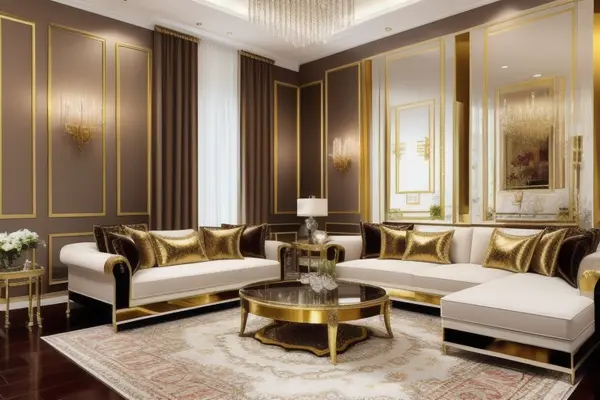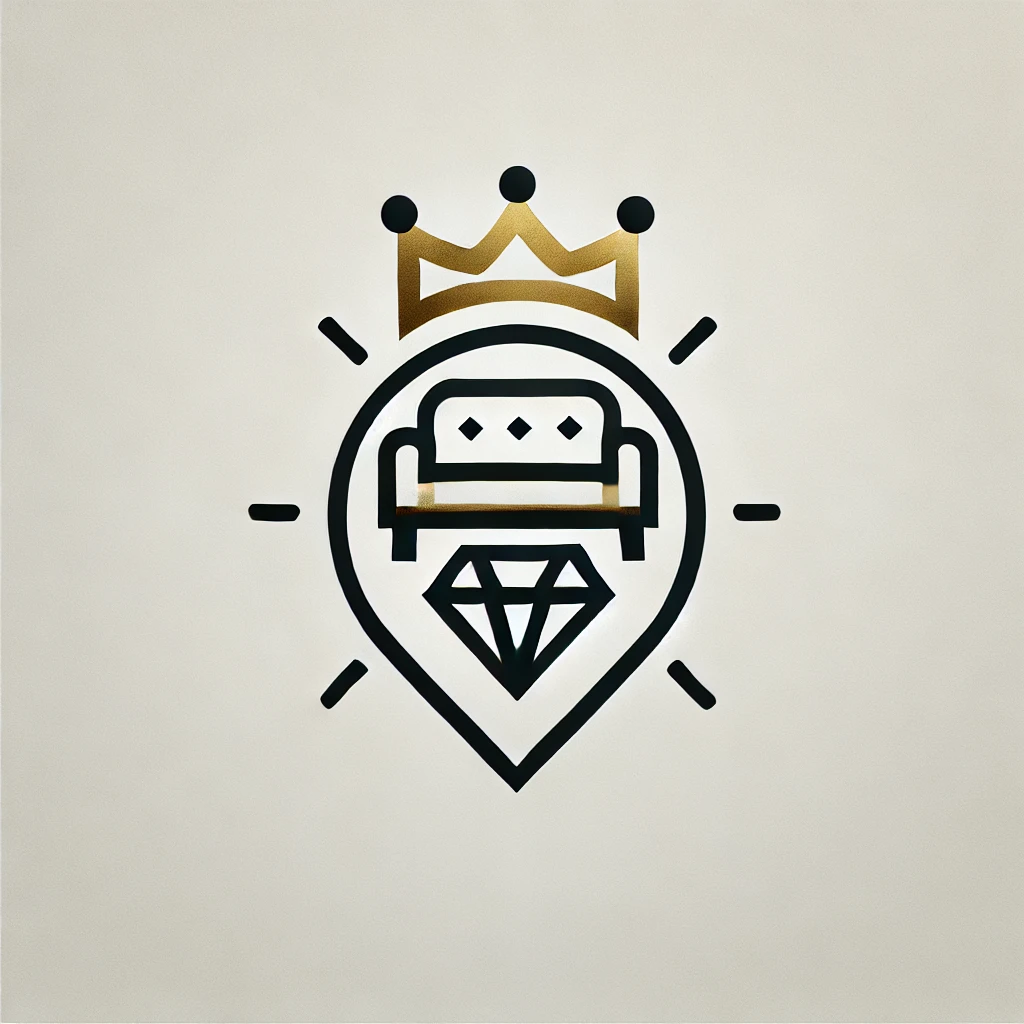Table of Contents:
Introduction: Embracing the Future with Interior Design Trends
Welcome to our exploration of future interior design trends. These trends not only beautify our homes and workspaces, but they also reflect societal shifts and technological advancements. Embracing these trends means participating in a constantly evolving dialogue between space, aesthetics and lifestyle. It's about being ready for the future, but with style and charm.
Whether you're a seasoned interior designer, an enthusiastic home decorator, or just someone with an interest in the aesthetic side of life, this post will equip you with the knowledge to incorporate these exciting developments into your spaces. So, get ready to have a front-row seat as we unveil the upcoming trends that will shape interior design in the coming years.
Understanding the Importance of Interior Design Trends
Before we delve into the specifics of interior design trends, it's crucial to understand why keeping up to date with these shifts is beneficial. Picture yourself stepping into a room - your reaction, whether bewilderment, awe, or calm, is heavily swayed by how the room is designed, decorated, and arranged. Now, multiply that impact by each room in a house, office, or restaurant, and you will see just how deeply interior design influences our daily experiences.
The power of fresh and thoughtful interior design goes beyond captivating aesthetics. It can create functionally effective spaces, enhance mood, maximize productivity, and facilitate comfort. Furthermore, by actively participating in the journey of ever-changing trends, we can embody and reflect the zeitgeist in our design choices, making our spaces not just contemporary but relatable and engaging.
Beyond the enjoyment of being part of this transformative journey, keeping informed about design trends can add great value. For homeowners, it can increase the appeal and value of your property should you ever wish to sell, and for business owners, it can attract more customers and boost your brand's image. For those in the design field, staying on top of trends is absolutely vital. And for everyone else, it's just extremely satisfying to keep the spaces around us in step with the times.
Pros and Cons of Following Interior Design Trends
| Pros | Cons |
|---|---|
| Fresh and Modern Aesthetics | Can Become Outdated Quickly |
| Increases Property Value | May Not Align With Personal Style |
| Draws Positive Attention | Potentially High Costs |
Exploring the Top Interior Design Trends of 2023
The year 2023 is set to bring some exciting evolutions in the world of interior design. These trends resonate the global focus towards wellness, expression, and sustainability. Let's explore each of these in detail.
Biophilic Designs
Biophilic designs embrace the connection between humans and nature, becoming a prominent design philosophy. This trend features the use of natural materials, plant life, natural light, views to the outdoors, and other experiences of nature to create harmonious interiors.
Embracing Bold Colours
While minimalist design and neutral colours have had their fair share of spotlight in the past, vibrant and bold colours are set to make a comeback in 2023. Rich, bold hues add personality and character and accentuate a space, making it more lively and appealing.
Handicraft Materials
In line with the sustainability movement, the use of handicraft materials is becoming increasingly popular. Handwoven textiles and handcrafted furniture pieces not only add an authentic feel to the space but also promote sustainability and support local artisans.
These are just a few glimpses of what’s to come in the sphere of interior design trends in 2023. These trends signify a new era of design that values nature, vibrancy, individuality, and sustainability.
The Role of Color Palettes and Materials in Interior Design Trends
When it comes to interior design, color palettes and materials play a massive role. They embody the homeowner's personality, reflect new societal ideals and values and, most importantly, set the mood and tone of a space.
Significance of Color Palettes
The importance of thoughtfully chosen color palettes in interior design cannot be overstated. They help to create harmony within a space, prominently influence mood and ambience, and can be a pivotal tool in showcasing personality. Whether we lean towards bold colors making a statement or subtly chic neutrals interplaying with textures, our color choices form the essence of our design scheme.
The Choice of Materials
Similarly, the materials we choose to incorporate into our spaces are of paramount importance. These selections tell a story - be it sustainability through the use of recycled materials, opulence through marble and gold accents, or an affinity for the traditional shown through handcrafted elements. A carefully chosen material can change not just the look, but also the feel and spirit of a space. In recent years, the emphasis has been leaning towards environmentally friendly and responsibly sourced materials, in line with the global sustainability trend.
Color palettes and materials, therefore, are more than mere visual accomplices in interior design. They steer the essence and narrative of the design, embodying the interior design trends we follow and the individuality we bring to our spaces.
Interior Design Trends 2024: Sustainability and Natural Elements
Design trends are increasingly becoming more purpose-driven, focusing on sustainability and natural elements. As we look towards 2024, these elements are predicted to become even more prevalent in interior design. Let's explore what these trends could entail.
Sustainability
Sustainability is one trend that just keeps growing. This comes as no surprise given the world's increasing consciousness about climate change and the necessity for sustainable living. In interior design, this translates to the use of eco-friendly, recyclable and sustainable materials, energy-efficient home appliances, and decor that isn't harmful to the environment. Recycling and upcycling are also becoming common practices in homes, with previously-owned goods being transformed into something aesthetically pleasing and functional.
Natural Elements
The power of natural elements in promoting well-being and peace is being recognized in design trends. Natural light is being utilized more effectively, spaces are being designed to encourage better air flow, and indoor plants are almost becoming mandatory in any modern home. Using natural materials in furniture and decor, like wood, bamboo and stone, is also on the rise. These elements not only bring a sense of serenity to a space but also add an organic, tactile appeal which enhances the overall aesthetic.
As we evolve to become more eco-friendly and health-conscious as a society, the impact is cascading down to the world of interior design trends. Sustainability and natural elements are not just trends we can expect to see on the rise in 2024, but are pathways to responsible and well-rounded lifestyle choices we all can make.
The Rise of Technology in Interior Design Trends 2025
As we cast our gaze further into the future, the year 2025 paints a picture of a world where technology and design coalesce to provide optimal living and working environments. This marriage of tech and aesthetics is a game-changer in the realm of interior design trends.
Smart Homes
The concept of smart homes has been gradually increasing over the recent years. In 2025, it's set to become the norm. Everything from lighting, temperature control, security, and entertainment can be controlled remotely in a smart home. This seamless integration of technology not only boosts the convenience factor exponentially, but it also lends itself towards more energy-efficient homes.
Integrated Technology
Along with smart homes, the integration of technology into the design is another trend on the rise. Implementing pop-up sockets, integrated charging ports, hidden appliances, and built-in speakers streamline the design while adding functionality. This makes our spaces more organized, clutter-free and technologically advanced, without hindering the aesthetic appeal.
Virtual and Augmented Reality
The fields of virtual reality (VR) and augmented reality (AR) have massive potential in interior design. They can help visualize design ideas, try out different options, and finalize design plans before making any physical changes. This powerful tool enhances the design process by making it flexible, interactive, and easily understandable to everyone involved.
In the coming years, we are sure to witness an interesting blend of design and technology, each enhancing the other in ways we are only beginning to explore.
Smart Living: A Key Aspect of Future Interior Design Trends
The era of smart living is upon us – and it promises to revolutionize the materials, techniques, and philosophies of interior design. Marrying technology and lifestyle, smart living is one of the most important interior design trends shaping our future homes.
Seamless Technology Integration
Smart living is all about seamless integration of technology into our daily lives in such a way that it enhances functionality without sacrificing design. Imagine voice-controlled lighting systems, intuitive kitchen gadgets that save time and energy, self-watering plant systems for your indoor garden, or multipurpose furniture with built-in charging stations and space-saving features. Smart living is as much about aesthetics as it is about practicality and ease of living.
Energy Efficiency
Smart living also means living sustainably. Smart devices help control energy consumption, minimize waste, and make homes more eco-friendly. Smart thermostats, energy-efficient lighting systems, intelligent irrigation systems, and appliances with energy-saving modes are becoming increasingly regular features in homes. These advancements not only reduce our carbon footprint but also contribute to significant savings in the long run.
Comfort and Convenience
At its core, smart living is designed to make life easier, comfortable, and convenient. The interconnectedness of devices, easy control mechanisms, and the ability to personalize almost all aspects of home life make living in a smart home a uniquely personalized experience.
The age of smart living is here, and it's only bound to get smarter. By understanding this key aspect of future interior design trends, we can use it to create spaces that are not just beautiful, but also incredibly efficient and uniquely personalized.
Conclusion: Staying Ahead with Interior Design Trends
Our exploration of future interior design trends unveils an exciting shift towards creating spaces that echo societal values and advancements. From incorporating sustainable and natural elements in our design choices, embracing technology for convenience and smart living, to celebrating vibrant colors and unique materials, these trends are far more than aesthetic statements - they are reflections of evolving ways of life.
Whether it's 2023's welcoming of bolder colors or 2024's move towards more sustainable designs, and the expected dominance of technology and smart living in 2025, these trends all have a common thread – They champion individual expression, innovation, and the harmonious coexistence of beauty and functionality.
Staying ahead with these interior design trends not only caters to our craving for visually pleasing spaces but also equips us with the tools to create settings that echo our values, fulfil practical needs and hold the ability to adapt to our evolving lifestyles. The future of interior design is a compelling blend of the visual and functional, the traditional and modern, all making way for a truly enriched living experience.
So, let's step forward into the future, transforming our spaces into sustainable sanctuaries of peace, comfort, and style, always staying a step ahead with the ever-evolving interior design trends.
Discover the Future: Key Interior Design Trends for 2023 to 2025
What are the new color palettes and materials in interior design trend for 2023?
There will be a focus on fresh, bold color palettes incorporating new, innovative materials.
What should we expect for the 2024 interior design trends?
The trend in 2024 will center around sustainability: expect to see natural elements taking a front seat.
How is technology integrating into interior design by 2025?
The integration of technology in interior design is expected to become more prevalent by 2025. Smart homes will be the norm, optimizing comfort, convenience and energy efficiency.
Are these trends global?
Yes, while regional nuances and cultural influences can always be expected, these trends highlight global shifts in the industry.
Are these trends suitable for commercial spaces as well?
Yes, these trends can be incorporated into both residential and commercial designs to create modern, engaging spaces.






